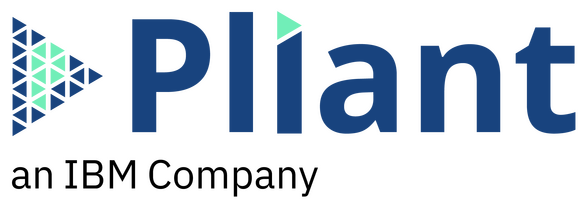Is platform engineering considered the next big chapter of DevOps?
By 2026, 80% of large software engineering organizations are expected to establish platform engineering teams. As the demand for automation and streamlined infrastructure management continues to rise, the need for tools and solutions built to meet the unique challenges of platform engineering has never been greater.
This is where Pliant’s low-code platform steps in.
In this blog, we’ll explore four crucial ways Pliant empowers platform engineers by providing a set of tools and features designed to streamline the creation and management of self-service developer platforms.
#1 – Low-Code, API-First Approach
To kick things off, our platform empowers non-coders with a low-code, API-first approach, streamlining the creation of orchestrated workflows.
With our intuitive visual interface, engineers can effortlessly design workflows by simply dragging and dropping blocks of API functionality onto a canvas. This approach significantly reduces the reliance on extensive coding knowledge, making automation accessible to a wider range of team members at your organization.
By using this low-code methodology, Pliant accelerates the coding proficiency of engineers, enabling them to focus more on process logic and less on intricate programming syntax. Our platform gives engineers the ability to craft sophisticated workflows armed only with their engineering expertise—without the need for deep coding expertise.
Pliant’s API-first design ensures seamless integration with existing systems and third-party services, enabling engineers to leverage a vast array of functionalities without the hassle of complex integration processes. This interoperability extends the capabilities of automation workflows, allowing engineers to create comprehensive solutions tailored to specific business needs.
#2 – Automation-First Mindset
Our automation-first mindset is centered around systematically automating the provisioning and ongoing management of infrastructure services.
At its core, it helps to pave the way for enhanced efficiency and agility in IT operations.
With an automation-first approach, platform engineers can streamline the deployment of infrastructure resources, minimizing manual intervention and accelerating the delivery of business-critical services. This systematic automation not only reduces the risk of human error but also ensures consistency and reliability across environments regardless of scale or complexity.
With Pliant’s automation-first philosophy, platform engineers can break down silos between technical domains and coding disciplines, fostering collaboration and innovation across teams. By standardizing tooling and processes, organizations can ensure a seamless and unified approach to infrastructure automation, driving operational excellence and meeting the evolving demands of modern IT environments.
#3 – Cross-Domain Engineering Disciplines
Simply put, our platform encourages a holistic approach to platform engineering, bringing together diverse skill sets to drive innovation and efficiency in IT operations.
By bridging the gap between technical domains and coding disciplines, Pliant enables platform engineers to break down silos and collaborate more effectively across teams. This cross-domain approach encourages knowledge sharing and exchange, promoting a culture of innovation and continuous improvement within organizations.
By integrating coding disciplines into platform engineering, Pliant enables engineers to leverage their programming skills to automate provisioning and management tasks. This not only enhances productivity but also ensures a more comprehensive and robust approach to infrastructure automation.
With Pliant, platform engineers can leverage their expertise in engineering disciplines across technical domains to optimize the developer experience and accelerate the delivery of customer value.
#4 – RBACs, API Gateways, and Self-Service Workflows
Role-Based Access Controls (RBACs) are a critical piece of security and governance within the Pliant platform.
With RBACs, platform engineers can define granular access permissions, ensuring that only authorized individuals have the ability to view, modify, or execute workflows. This not only safeguards sensitive data but also promotes accountability and compliance within organizations.
API Gateways provide a seamless bridge between Pliant and external systems, enabling platform engineers to integrate with a myriad of third-party services effortlessly. Whether it’s connecting to cloud platforms, databases, or custom applications, API Gateways streamline data exchange and facilitate interoperability, enhancing the agility and flexibility of automation workflows.
Pliant offers a user-friendly Hub for self-service workflows, empowering platform engineers to publish, discover, and deploy automation solutions with ease. By centralizing access to workflows within a self-service portal, Pliant promotes collaboration and knowledge sharing across teams, driving innovation and accelerating time to market for automation initiatives.
By prioritizing security, integration, and user experience, Pliant enables platform engineers to unleash the full potential of automation and drive digital transformation within their organizations.
Final Thoughts
As we’ve seen, Pliant plays a crucial role (four to be exact) in enabling platform engineers by offering a low-code, API-first platform that accelerates coding proficiency and enhances automation capabilities. Ready to see how Pliant can revolutionize your automation workflows? Contact our team to unlock the full potential of your platform engineering initiatives.
